2016 MXA RACE TEST: EVERYTHING YOU NEED TO KNOW ABOUT THE HONDA CRF450
Q: FIRST AND FOREMOST, IS THE 2016 CRF450 BETTER THAN THE 2015 CRF450?
A: One thing you can’t accuse the 2016 Honda of is being a Bold New Graphics bike. BNG wasn’t on Honda’s agenda for 2016. And that agenda was very lean with only six changes to separate the 2016 model from the 2015. And none of those changes are going to make the bells of St. Mary’s start ringing in celebration.
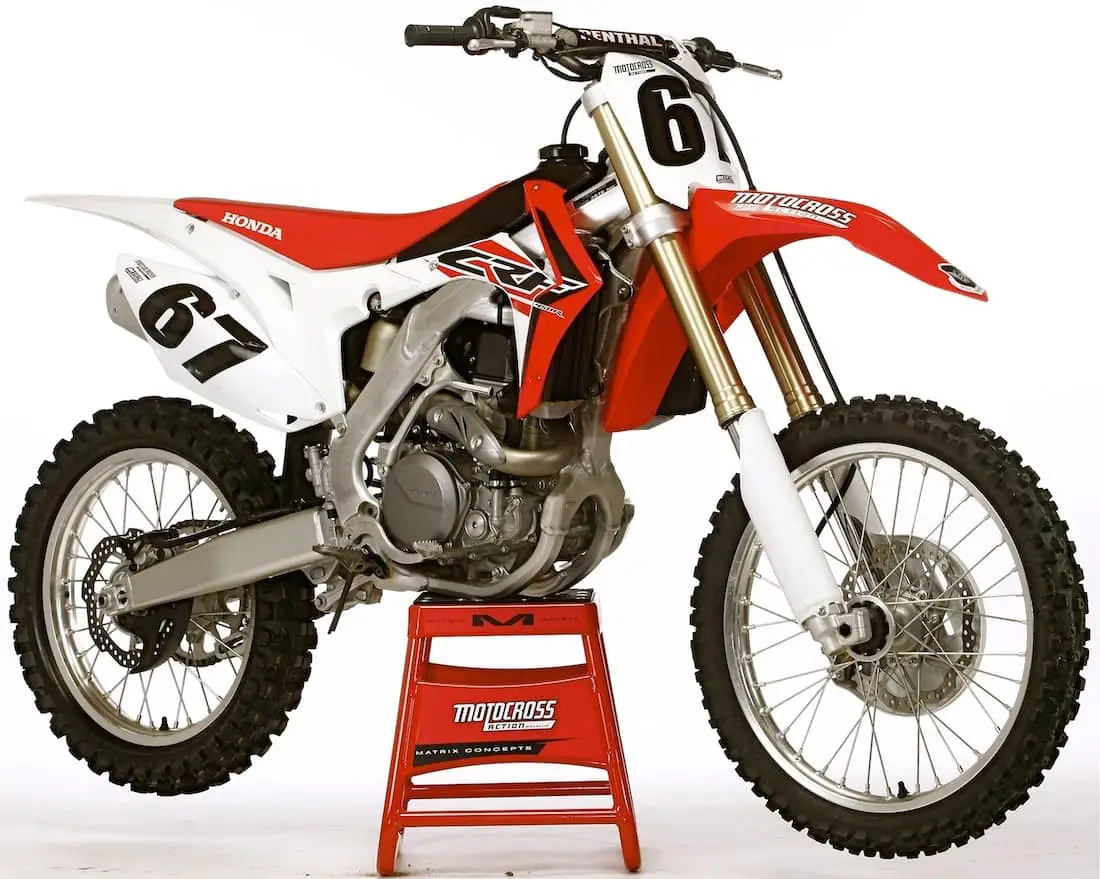 2016 Honda CRF450: Although it looks identical to last year (the opposite of BNG), the 2016 CRF450 has six changes—most of which were designed to calm the chassis at speed.
2016 Honda CRF450: Although it looks identical to last year (the opposite of BNG), the 2016 CRF450 has six changes—most of which were designed to calm the chassis at speed.
Q: WHAT WERE THE SIX CHANGES THAT HONDA MADE TO THE 2016 CRF450?
A: The 2016 Honda CRF450 had six minor changes made to the suspension package—if you count the 4mm smaller chain roller chain as a suspension mod.
(1) Fork length. Honda lengthened the forks by 5mm. This was done to slacken the head angle of the frame without having to invest in a new chassis. The longer forks will allow for more stability at speed.
(2) Shock linkage. The 2016 CRF450 gets a new rising-rate linkage. Well, it isn’t exactly new. The 2016 CRF450 gets the rising-rate linkage similar to the 2015 Honda CRF250 linkage. Nothing odd about this, because from 2009 to 2012 Honda changed the shock linkage three times (softer in 2010, stiffer in 2011 and softer again in 2013). This year it is stiffer initially and softer at the end of the stroke.
(3) Chain roller. The diameter of the chain roller has been reduced by 4mm to 34mm. By altering the size of the chain roller, Honda’s engineers are able to control brake torque when the bottom chain run is taut. Not surprisingly, Honda had downsized the chain roller to 38mm just three years ago before downsizing it again this year.
(4) Suspension clickers. The forks and shock are both re-valved, albeit slightly, with both getting stiffer low-speed damping. Additionally, back in 2015, the shock and fork clickers had four clicks per rotation. For 2016 they have eight clicks per rotation, which essentially doubles the number of settings by halving the difference of each click.
 Scraper: The footpeg is unchanged, but the mounting bracket is designed to keep mud from clogging the pivot.
Scraper: The footpeg is unchanged, but the mounting bracket is designed to keep mud from clogging the pivot.
(5) Footpeg brackets. Over the last few years the Honda footpegs could get clogged with mud and lock into the upright position. While the footpegs are unchanged for 2016, the bracket they mount to has been redesigned with a scraper to help clear mud out of the pivot area. These new brackets will retrofit on 2013 to 2015 CRFs.
(6) Brake line. Although we couldn’t tell the difference and Honda had no tech info on what was changed, the front brake hose has a new part number.
Q: WHERE IS THE HONDA CRF450 AT IN ITS FOUR-YEAR PLAN?
A: When the recession hit in 2008, the Japanese manufacturers retreated and became entrenched in their traditional four-year development plans. That meant that any new model, like the ill-fated 2009 CRF450, was destined to stay around for four long years. If the design was flawed, it would stay flawed. If it was slow, it would stay slow. At the end of the four years, a new model would be released. In Honda’s case, the 2009 generation was replaced by the 2013 CRF450, of which 2016 is now its fourth year of production. You don’t need a degree in plasma physics to figure out that Honda doesn’t want to spend any R&D money on a bike that is at the end of its life cycle. Better to save the money for the next four-year bike—the 2017 CRF450.
It isn’t that the four-year plan hasn’t worked in the past, or that Honda is the only manufacturer to follow this regimen; it’s just that when you combine the decline in dirt bike sales during the economic downturn with KTM’s maniacal devotion to pumping out new machinery whenever the mood strikes them, it is easy for a brand to get buried in quick order. Honda has been back on its heels ever since they dropped the fabulous 2008 CRF450 for the weirdly configured 2009 and then doubled down with the slow-is-better formula in 2013. In the process they lost their loyal clientele and are no longer the number-one-selling motocross bikes. In fact, they aren’t the number- one-selling Japanese motocross bike anymore.
They lost their mojo in 2009 and have little hope of getting it back until 2017.
Q: IS THE 2016 HONDA CRF450 FASTER THAN THE 2015 CRF450?
A: No. This engine is stuck in a time warp when it comes to horsepower. If you don’t make changes from year to year, you fall behind the competition. Honda has slipped off the horsepower charts. Given that it wasn’t very fast in 2015, it is not very fast in 2016. That said, the CRF450 engine is very tractable, well-modulated and pleasant to ride. It produces what MXA test riders referred to as a “no-hurry” style of power. Because it revs predictably, the powerband is quite usable and is well-suited to the typical local motocross racer. However, it is strictly a low-to-mid powerplant. It picks up quick, feels like it is on steroids, and then after 8600 rpm, it goes flat on top. It does rev, but it makes less horsepower at 9000 rpm than it does at 8000 rpm, and less at 10,000 rpm than 9000 rpm, and so on.
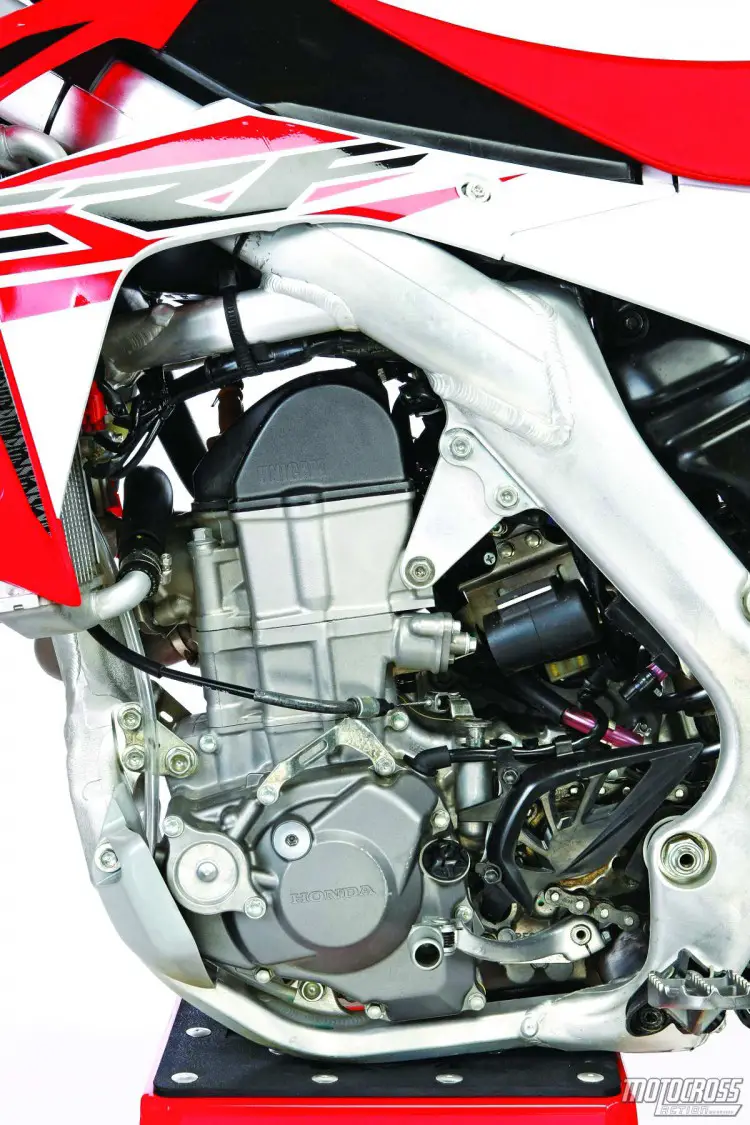 Waiting game: There are no engine changes for 2016. If you liked it in 2015, you will like it now. And, vice versa.
Waiting game: There are no engine changes for 2016. If you liked it in 2015, you will like it now. And, vice versa.
Q: WHAT DOES THE 2016 CRF450 POWERBAND FEEL LIKE ON THE TRACK?
A: Apart from its shortcomings as a power-monger, the CRF450 is a really fun bike to ride. It is a more-than-capable motocross weapon—if used properly. As a rule of thumb, flat powerbands work best when short-shifted. In the case of the 2016 CRF450 that means shifting just short of peak. If you don’t shift at peak and persist in revving the engine (and it will rev for an extra 3000 rpm) you will not be rewarded with forward thrust, because there is no torque or thrust to be gained by going past 8600 rpm. Revving the engine will produce noise, not power.
“Mellow” isn’t a criticism as much as an apt description of what the CRF has to work with. Since the power output is well below the scary-fast threshold, the CRF450 is less jerky and violent than bikes with big horsepower numbers. It can be ridden harder because it rewards aggressiveness with a hooked-up feel instead of a wheelie and a swap. The 2016 Honda CRF450 was so controllable in the turns that it generated greater exit speed. And that exit speed was as good as horsepower down the next straight. CRF450 racers have to fight the war on their own ground—diving to the inside, keeping it hooked up in successive transitional corners, and by wearing the competition out late in the moto.
Q: HOW DOES THE 2016 CRF450 RUN ON THE DYNO?
A: Peak horsepower on the 2016 Honda CRF450 is 53.03, while the KTM 450SXF makes 57.98 horsepower. That is a very big difference on the track.
Q: WHAT IS THE BEST EFI MAP?
A: The 2015 and 2016 Honda CRF450 have three maps—mellow, stock and aggressive. Every MXA test rider chose the stock map.
Q: DOES THE 2016 CRF450 HANDLE BETTER THAN THE 2015 MODEL?
A: Even though the Honda sales department may not like the things that the MXA wrecking crew says about their bikes, the Honda R&D department knows the flaws. In the case of Honda’s engineers, they realized that they had pushed the handling envelope too far to the cornering side of the equation over the last three years. Turn initiation was the 2015 CRF450’s best trait. However, the 2015 was twitchy at speed and loose in the rough. Given the limited R&D budget for 2016, the Honda engineers had to come up with some low-cost but effective changes to find more stability. How did they do it?
(1) Longer forks. Lengthening the forks had nothing to do with the suspension. Instead, the longer fork legs raised the front of the frame, which made the head angle slacker. Slack head angles are more stable at speed. This 5mm mod was an inexpensive way to get new frame geometry without investing in a new frame.
(2) Shock linkage. By switching to last year’s CRF250 shock linkage, Honda changed the ride height, held the rear higher (to complement the higher front end), and lessened the rising rate’s tendency to ramp up so quickly at the end of the stroke.
What was the result? It does handle better than in 2015, but only if you can find the perfect fore/aft balance. With the help of Kayaba technicians we were able to fiddle with the front and rear enough to get exactly what we wanted. But be forewarned that a change to one end will affect the other end.
Q: WHAT DO YOU NEED TO KNOW ABOUT PSF-2 FORKS?
A: You’ll have to stick with us on this because it gets a little complicated. The Kayaba PSF-2 forks are low-pressure air forks with rebound damping in the right leg and compression damping in the left. Here are the steps we took to get the suspension as good as it could get.
(1) Lifestyle. We like low-pressure air forks—although we love KYB SSS coil-spring forks. Low-pressure forks have separate air chambers, which only require 35 psi—and although there were horror stories when the forks were first released about the forks going flat when the fork seals blew, that hasn’t been the case. Compared to the TAC triple-chamber forks, which requires not just very high-pressure settings but a mathematical balance between the main pressure and the balance pressure, Kayaba PSF-2 air forks are fairly easy to adjust.
(2) Burping the baby. The first time you adjust the air pressure in your forks you need to burp the forks. What does that mean? Because of cavitation, there is air trapped in the fork oil, encapsulated in tiny bubbles. Thus, the first time you set the air pressure, the air bubbles will conjoin with the rest of the air pressure and lower the overall settings. For example, you might put 35 psi in the fork, but it will go down to 34 when the air bubbles integrate. No worries. Just reset the air pressure to 35 and you are good to go. There will be no more air bubbles in the oil until you let all of the air out of the forks during servicing, then you have to burp them again.
(3) Checking the pressure. You cannot—we repeat, cannot—check the air pressure in your air forks with the gauge on your pump. Not only is that gauge about as accurate as a good guess, but when you attach the pump to the fork’s Schrader valve, the air in the fork bleeds into the pump barrel. This leak lowers the air pressure at the gauge. The conundrum? You think you have 35 psi, but the pump says 25 psi. However, you most likely had 35 psi until you attached the pump. As a rule, use the pump to set the pressure that you desire—and forget about checking the pressure.
(4) Bottoming control. The high-speed compression damper on the PSF-2 forks work very much like a bottoming control. The more you turn it in, the firmer the forks become at the end of the stroke. Did we say “firmer”? We meant to say “harsher.” The best setup trick is to adjust the high-speed compression to suit the biggest bumps and jumps on the track and then use the low-speed compression adjuster to fill in the damping leading up to it.
Q: WHAT DID WE HATE?
A: The hate list:
(1) Exhaust pipe. It sticks out like Frisco bars on a chopper.
(2) Gearing. Perfect gearing is crucial on a short-shift engine. We were never enamored with any changes we made, but most test riders geared it down to make the one thing it does best—low-to-mid—feel more aggressive.
(3) Clutch. It’s spongy, weak and releases at the end of the lever’s play. It needs stiffer clutch springs, but if you go too stiff, you turn the clutch actuation point into a hair trigger that offers no feel. We start with six stiffer clutch springs, and if that is too quick, we go to three stiff springs and three stock springs.
(4) Flame-out. The CRF450 is prone to flaming out any time you twist the throttle from on to off to on. Last year the Honda engineers added more inertia to the flywheel to help alleviate the problem, but it didn’t do the job. If flame-out is an issue, turn the idle up to keep the engine percolating when the throttle is off. Some of the flame-out issues can be traced to the hair-trigger clutch actuation, which doesn’t allow the rider to feed rpm in smoothly on the exit of turns.
(5) Twice pipes. If Honda ever wants to get back to the top spot on the lightest bike chart, we know where they can lose a couple pounds. The twice pipes are one of the oddest features in motocross. They add weight, complexity and cost without adding power.
(6) Power. It’s not fast. The power is quick and short. We don’t fully understand why one of the world’s most respected motorcycle manufacturers would want to build the bike with the least horsepower.
(7) PSF-2 forks. The whole idea behind the Kayaba PSF-2 forks is appealing. They are simpler to work with than the Showa SFF TAC air forks, don’t run high pressures and have high-and low-speed adjusters, but we don’t like them (which makes them unappealing).
Q: WHAT DID WE LIKE?
A: The like list:
(2) Shock linkage. Last year the MXA wrecking crew ran a longer shock linkage. Why? To drop the rear of the CRF, hold the shock higher in the stroke and slacken the head angle. This year Honda did some of it for us.
(3) Brakes. Honda’s oversized 270mm brake is a big improvement over what they used to have. It’s stronger, but not very well modulated. Maybe the complete Nissin system isn’t as well-mated as KTM’s Brembo design, but at least the bike has competitive braking power.
(4) Weight. Once the lightest 450cc bike on the track, the Honda has been overshadowed by the 227-pound KTM 450SXF. At 233 pounds the 6 extra pounds makes it heavier than the KTM, 229-pound Husqvarna and 231-pound KX450F.
(5) HPSD. The Honda Steering damper comes in handy. We crank it all the way in to help lessen twitchiness.
Q: WHAT DO WE REALLY THINK?
A: On the surface we want to see Honda play the horsepower game that they were so good at just a decade ago, but deep inside we believe there is a market for an easy-to-ride, low-horsepower race bike.
MXA’S HONDA CRF450 SETUP SPECS
This is how we set up our 2016 Honda CRF450 for racing. We offer it as a guide to help you find your own sweet spot.
KAYABA PSF-2 FORK SETTINGS
Honda ran Kayaba’s low-pressure PSF air forks in 2013–’14, but for 2015–’16 they switched to PSF-2 air forks. PSF-2 is a blend of WP 4CS forks (in that the rebound damping is in one fork leg and compression damping in the other) and the previous PSF air forks. Unlike Showa SFF TAC forks, which run about 170 psi, PSF-2 forks only use 35 psi. The twist is that Kayaba PSF-2 forks have both high- and low-speed compression and rebound damping on the top of the fork caps. However, these forks aren’t very good. They don’t seem to have an air pressure settings that holds them up in the stroke without being too harsh or one that allows them to absorb bumps without diving on deceleration. For hard-core racing, these are MXA’s recommended 2016 Honda CRF450 fork settings (stock settings are in parentheses):
Spring rate: 35 psi
Oil height: 87mm
Hi-compression: 24 clicks out (20 clicks)
Lo-comprerssion: 24 clicks out (22 clicks)
Hi-rebound: 25 clicks out (27 clicks)
Lo-rebound: 27 clicks out
Fork-leg height: Flush
Notes: The clickers are more sensitive than last year, because there are 8 clicks per rotation instead of 4. This is a plus, because it makes tuning changes much more accurate—albeit a little more difficult to zero in on. Once you find the correct air-pressure setting for your weight, speed and track, focus on making all the adjustments with the compression and rebound clickers. Leave the air alone.
KAYABA SHOCK SETTINGS
For riders who owned a 2015 CRF450, the shock settings will seem strange because the numbers are so different. For example, last year we ran 4 clicks out on the rebound. This year we are 21 clicks out. Don’t think that our 21 clicks out is five times lighter than our 4 clicks from a year ago; it’s just a mathematical byproduct to the new rising-rate linkage and the new clicker design. For hard-core racing, these are MXA’s recommended 2016 CRF450 shock settings (stock settings are in parentheses).
Spring rate: 56 N/m (54 N/m)
Race sag: 105mm
Hi-compression: 21 clicks out (19 clicks)
Lo-compression: 22 clicks out (20 clicks)
Rebound: 21 clicks out (22 clciks out)
Notes: MXA’s biggest change was to swap out the stock 54 N/m shock spring for a stiffer 56 N/m spring. This was a great mod for fast guys and riders over 175 pounds. Lightweight riders can stick with the stock spring. With the stiff spring we turned the high-speed compression out 2 clicks to allow the shock to ride a little lower. We didn’t need to turn the high-speed compression out with the stock spring rate and light riders.
MXA’S 2016 HONDA CRF450 VIDEO



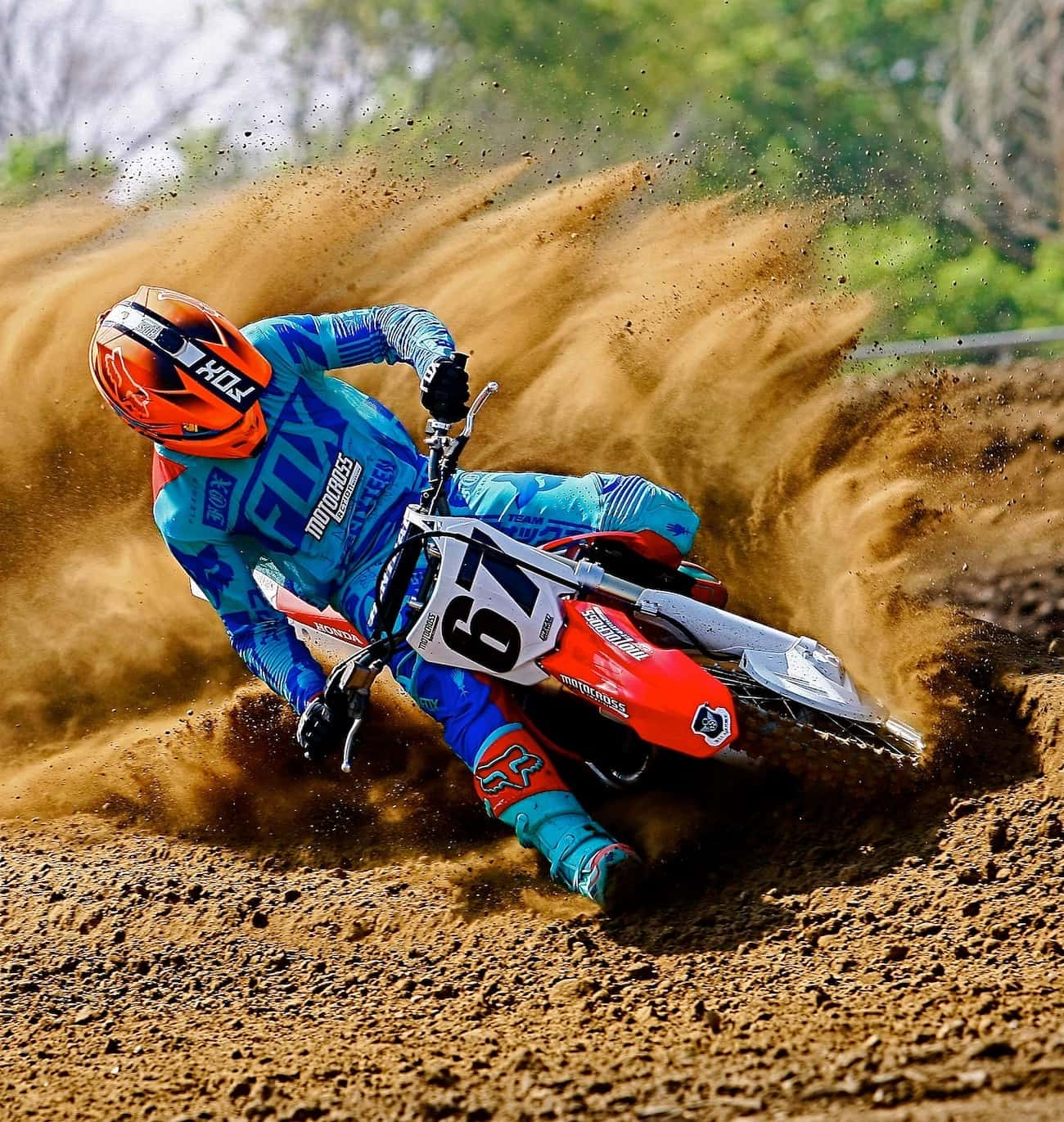
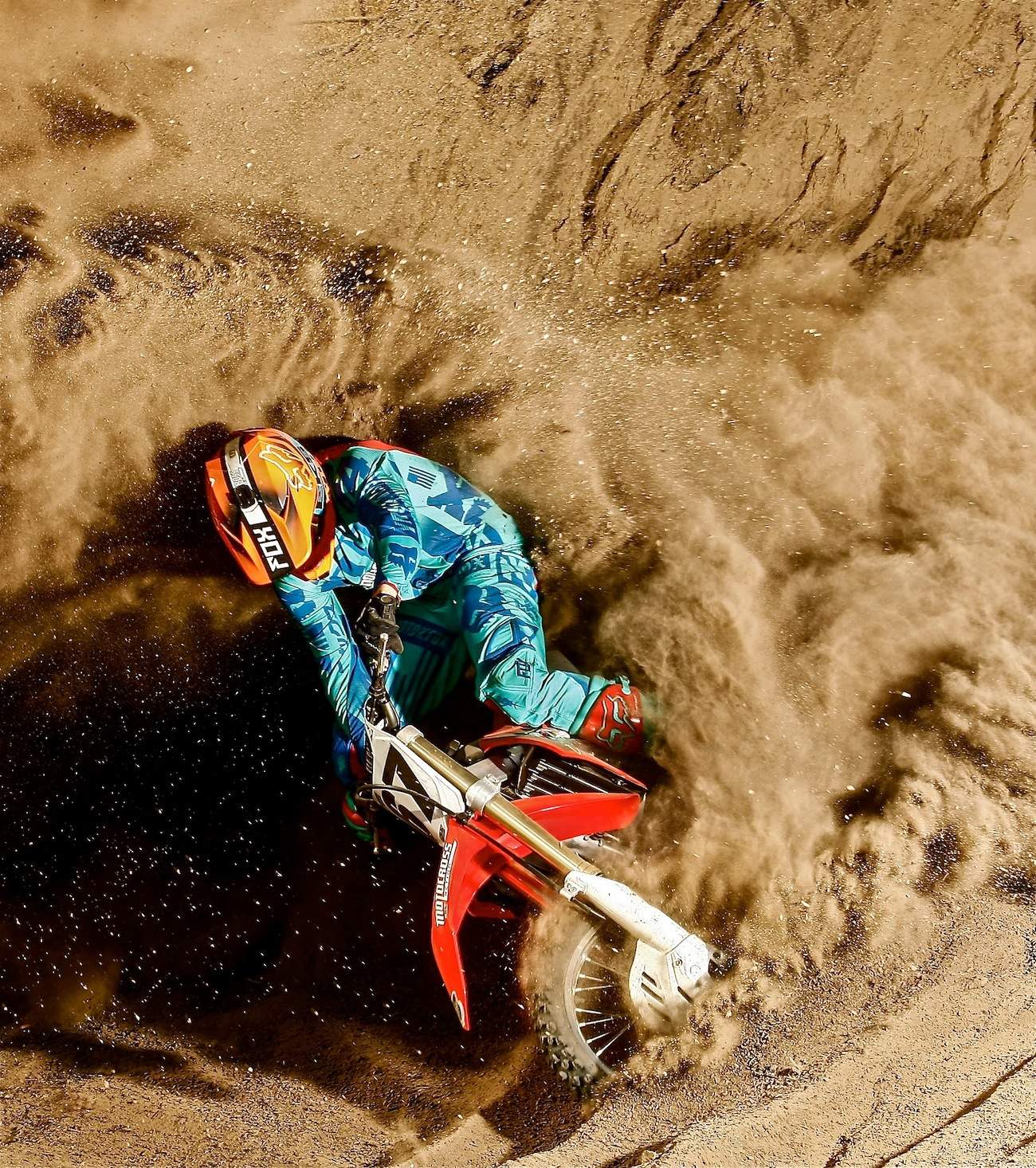
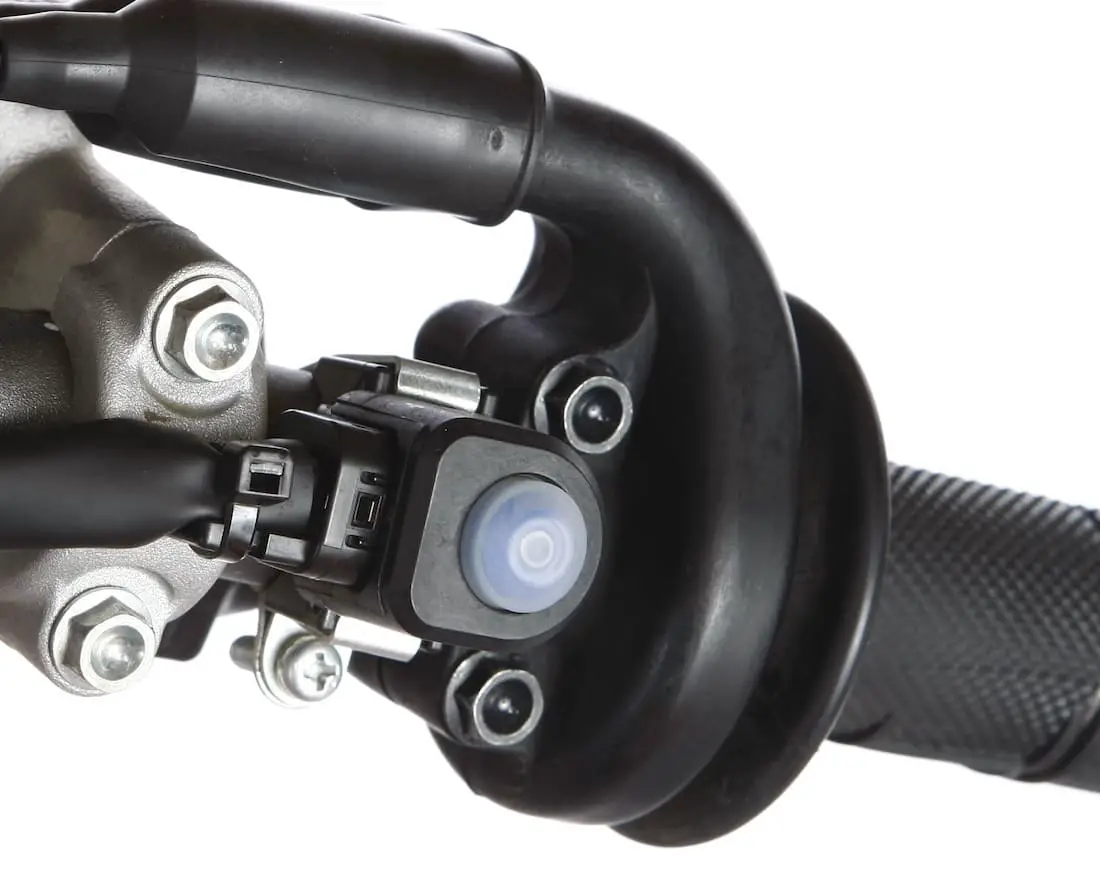

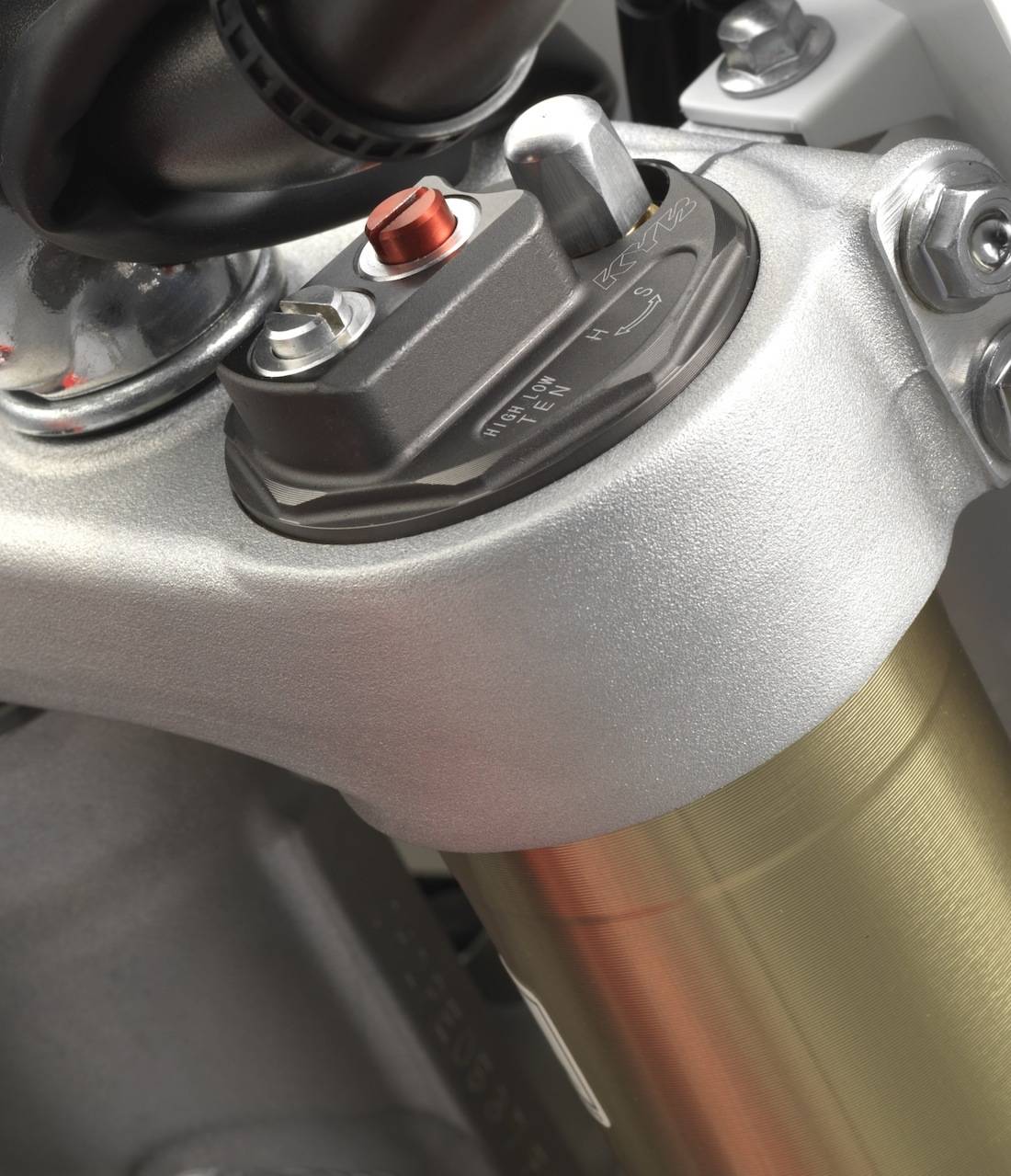

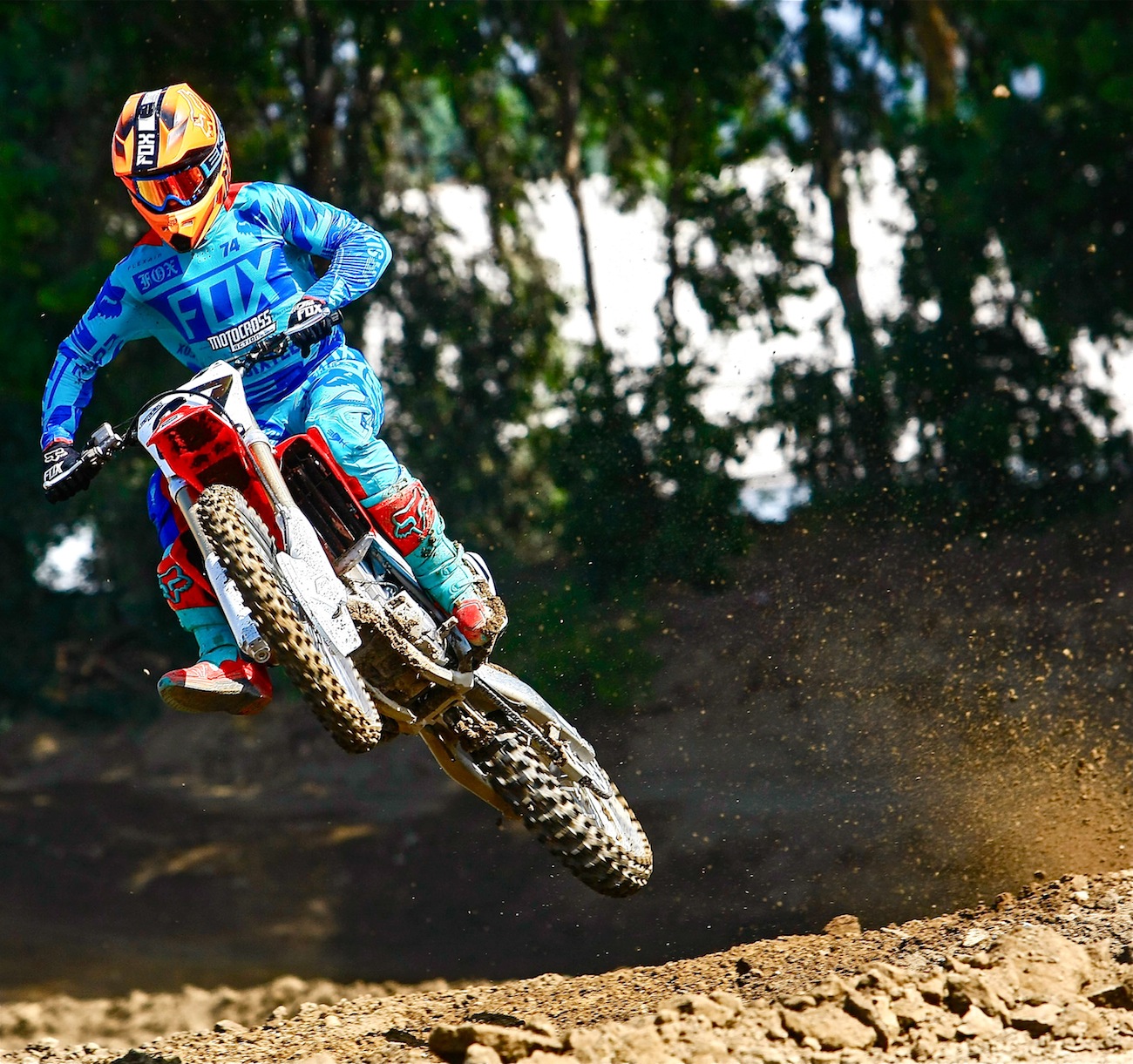


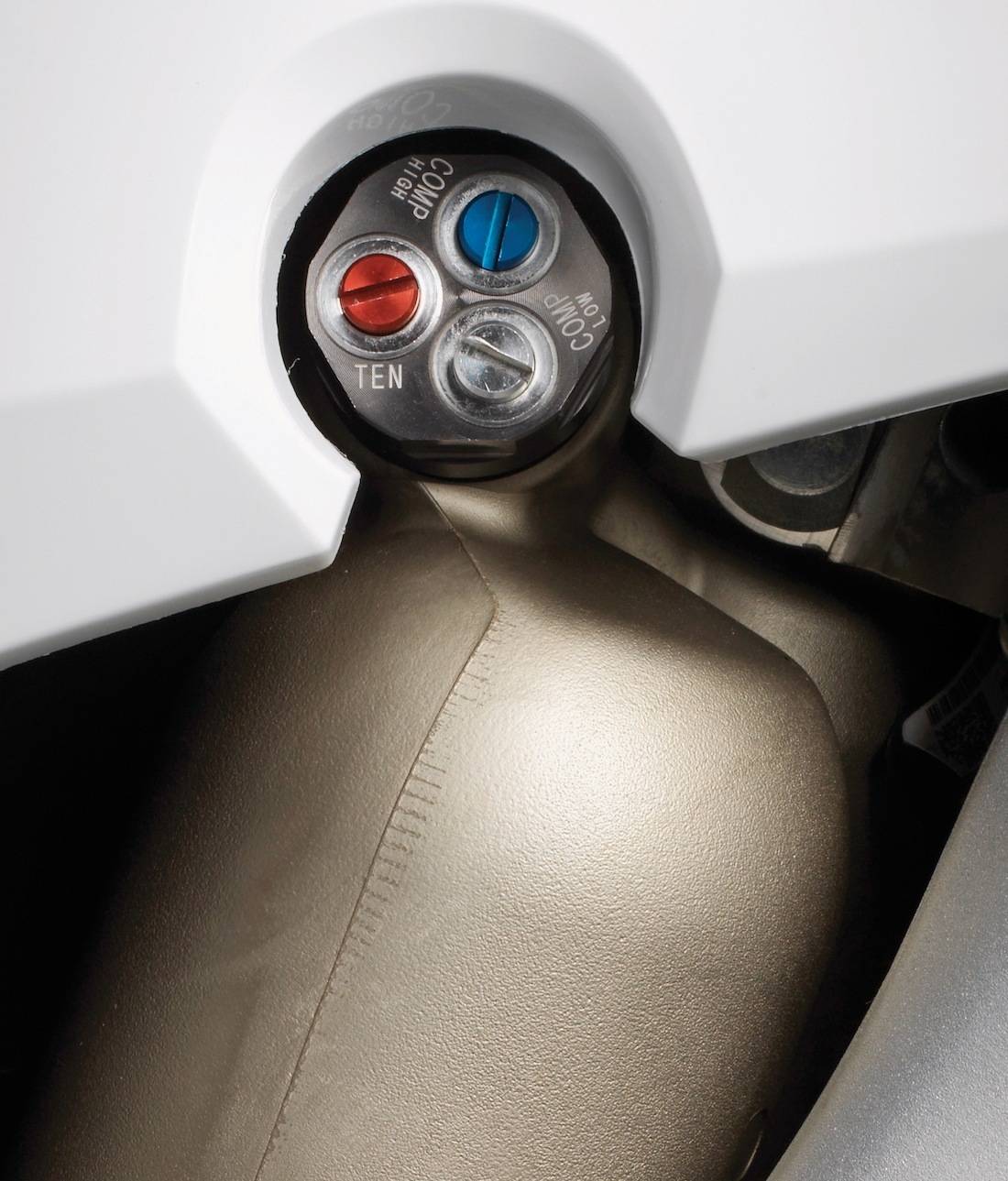



Comments are closed.